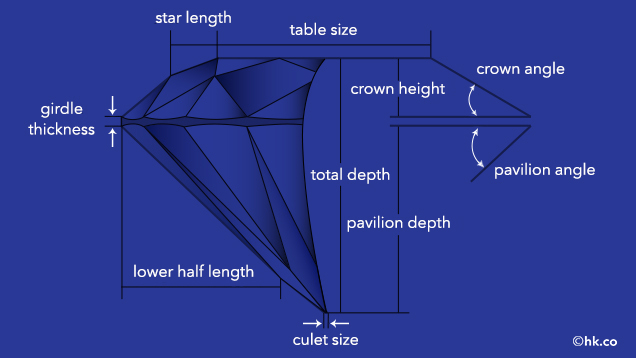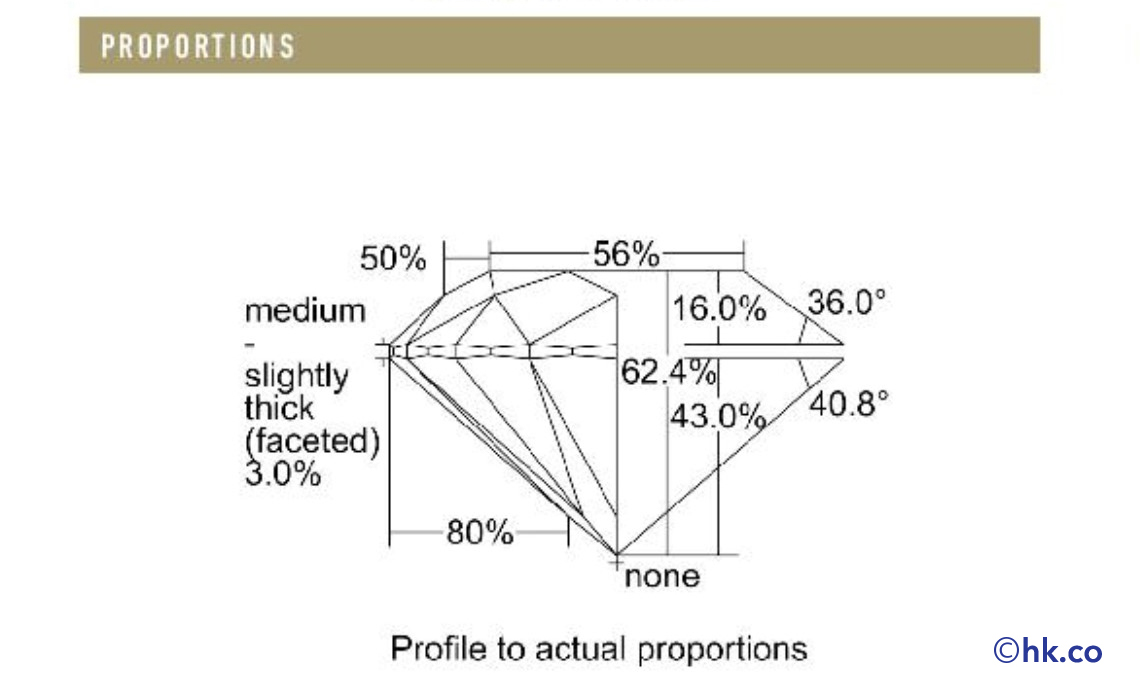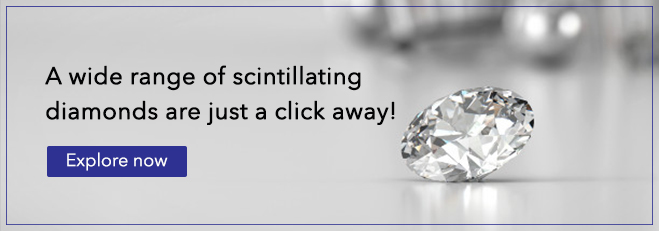Diamond Anatomy Study Bonanza With HK – The nitty and gritty of the diamond structure
Posted by Hari Krishna
March 18, 2021
Just like humans, it is crucial to understand the anatomy of diamonds. Because with an in-depth understanding of diamond anatomy, you can make better decisions while buying diamonds.
But before going further, let us first tell you about what the diamond anatomy means. The measure of properties and proportions of diamond-cut constitute diamond anatomy.
The diamond-cut evaluation comprises several complex characteristics, such as quality of diamond-polish, the symmetry of diamond-facet arrangements, proportion of cut components, etc.
All diamonds have a distinct set of proportions to define their anatomy, depending upon their shape, accuracy of a diamond-cut, preciseness of diamond-polish, etc.
Mainly, the diamond anatomy constitutes the study of diamond-table, diamond-crown, diamond-girdle, diamond-pavilion, and the diamond-culet.

Hence, diamond anatomy highly affects diamond fire, brilliance, and scintillation. This way, an in-depth understanding of diamond anatomy helps one to buy a well-cut brilliant diamond.

So, without further ado, let us take you on this sparkling journey of understanding the diamond anatomy.
The diamond table is the top-most flat-facet of the diamond. The diamond-table is the largest among all diamond-facets, irrespective of the diamond-shape.
The purpose of the diamond table is to allow the light to enter the diamond. The amount of light that enters the diamond and reflects around depends on the table size.
Too large diamond-table leaves no room for light to reflect from the diamond, and too small diamond-table leaves no room for light to enter into the diamond in the first place.
There is no such thing as the ideal table size, as the table size varies according to diamond-shape and color to get the maximum sparkle.
However, the table percentage (in terms of average girdle diameter) between 52 to 62 is optimum, accompanying all the other corresponding proportions for a well-cut diamond.
In this way, table-size majorly affects the dazzling diamond brilliance. Hence, to achieve maximum scintillation, the diamond table should be perfectly centered and parallel to the diamond-girdle.
The diamond crown, an extension of the diamond table, consists of the part between the diamond girdle and table.
Post-embedded into the jewellery, the diamond crown is most prone to scratches because it will rest above the prongs and be the most visible part.
The diamond-crown distributes the incoming light across the diamond and the reflected light through its multifaceted surface to create incredible diamond fire and scintillation.
The crown angle plays a crucial part in achieving such a breath-taking diamond-fire. The angle measured from the top-most of the girdle to the diamond table is called the crown angle.
The larger crown angle will limit the diamond sparkle, and the smaller crown angle will make a diamond look clear and glassy.
The diamond girdle is the widest part of the diamond, where the diamond-crown and diamond-pavilion meets.
The girdle can be left rough, only polished, or faceted. The optimum thick diamond-girdle gives strength to the diamond.
Too thin girdle increases the risk of accidental chips and cracks, and an overly thick girdle adds too much weight in the middle of the diamond, making it appear smaller than the actual carat weight.
The pavilion is the bottom part of the diamond, which connects the culet and the girdle. It is also the longest part of the diamond, except for the rectangular shapes like an emerald.
Being the longest part, most of the diamond-weight rests at the pavilion. However, the pavilion depth and the angle of its facets highly affect diamond sparkle and scintillation.
For example, an overly-deep pavilion restricts the reflected light from exiting the crown, which reduces the diamond-sparkle, and creates a darkened effect in the diamond.
The shallow pavilion creates a fish-eye effect in the diamond by reflecting the girdle in the middle of the diamond-table, which produces dull sparkle.
Similar to pavilion-depth, the angle of pavilion facets should also be neither too large nor too small.
Because the too-large pavilion-angle will not produce an ideal diamond-sparkle, and the too-small pavilion-angle will make a diamond look glassy.
The diamond-culet is the smallest part of a diamond at the bottom of a pavilion. It protects diamond-pavilion by reducing its risk of chipping or abrasion.
The diamond-culet size highly affects diamond face-up appearance. Its size can vary from a sharp point (none) to a largish facet.
The ideal culet size is the pointed culet (diamond with no culet). However, having a small diamond culet also allows light to refract properly through the crown without hampering diamond-brilliance.
But if a diamond-culet is too large, it will look like a dark spot/hole in the diamond when viewed from the table.
By now, you must have realized how important it is to understand the diamond anatomy in detail.
When all the facets of a diamond are skillfully crafted as perfectly aligned to their ideal proportions, it creates a breath-taking diamond fire.
Well, after understanding the primary components of diamond anatomy, you must have developed the curiosity of knowing more about these components in detail.
Do not worry. We are here to share the micro-detail of the structure and characteristics of this incredible marvel of nature with you all.
Stay tuned for our upcoming articles! Till then, you can browse our sparkling inventory of precisely crafted diamonds!
